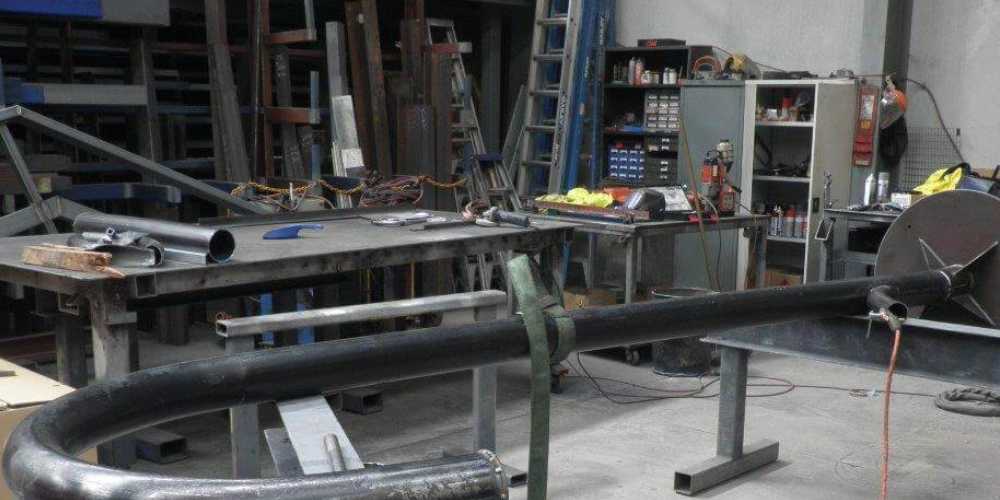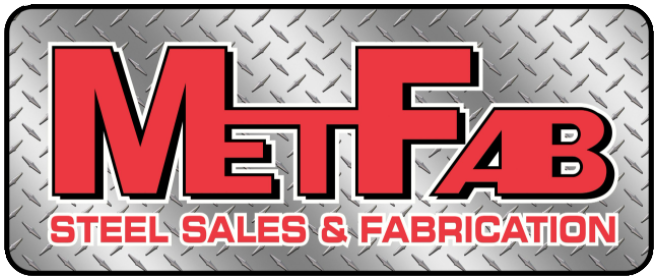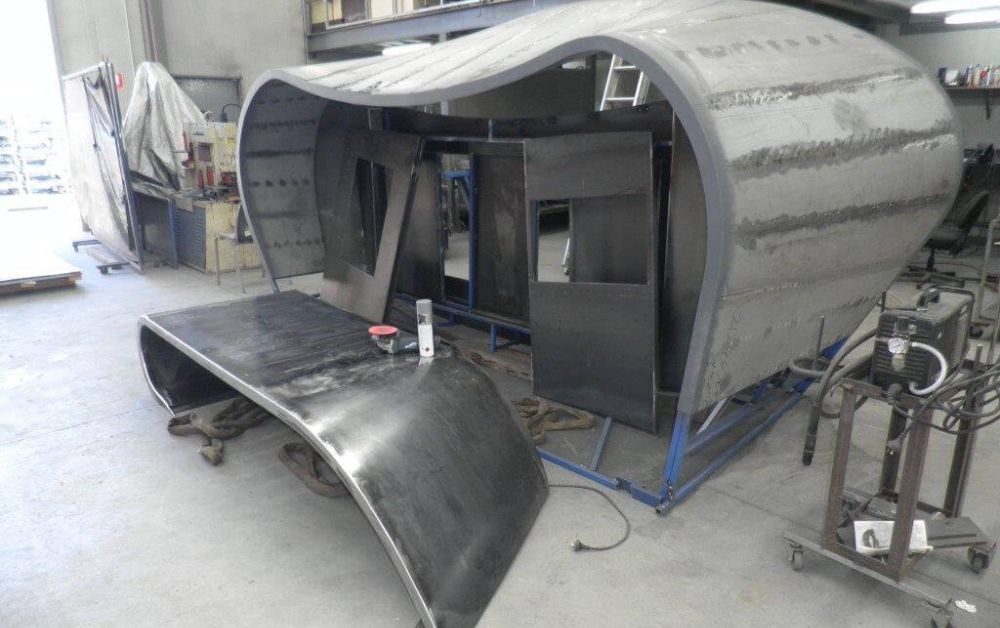Cold vs Hot Metal Forming - The Ultimate Comparison
Did you come to a point when you were a child and became so amazed by metalworks that you came across the road and wondered how these metals were formed?
Well, you're not alone. Even adults ask those questions, too! We all can't help but be amazed at how these sturdy materials can be transformed into intricate shapes and structures that serve various purposes in our daily lives.
As a metal fabricator with over 20 years of experience here in Melbourne, I've seen firsthand the wonder and curiosity that metalworking sparks in people of all ages.
Commonly, metals are formed in two ways - hot and cold metal forming.
Read on as we discuss the main difference between the two.
Metal Forming Comparison
| Aspect | Hot Metal Forming | Cold Metal Forming |
|---|---|---|
| Definition | Metal is heated to high temperatures for shaping. | Metal is formed at room temperature or slightly below. |
| Types of Metal Used | Steel, Aluminium, Steel Alloys | Stainless Steel, Copper, Brass |
| Advantages | Better formability, decreased hardening, higher production rates, enhanced texture finish | Lower energy consumption, improved dimensional accuracy, enhanced material properties |
| Disadvantages | Increased energy use, material distortion, limited precision | Reduced formability, increased work hardening, surface imperfections |
| Applications/Industries | Automotive, Aerospace, Oil & Gas, Heavy Machinery | Sheet Metal Fabrication, Electronics, Construction, Medical |
Definition
Hot Metal Forming
Hot metal forming requires heating the metal to high temperatures, typically above its recrystallisation point. This heat makes the metal more pliable and easier to shape without cracking. It's like working with clay – heated metal can be moulded into intricate shapes and designs. Forging, extrusion, and hot rolling fall under hot metal forming.
Cold Metal Forming
Conversely, cold metal forming doesn't involve heating the metal. It's done at room temperature or slightly below. The metal retains its original temperature throughout the process. Cold forming relies on applying force to shape the metal, similar to how you might bend a paperclip. Techniques like bending, stamping, drawing, and cold rolling are common in cold metal forming.
Types of Metal Used
Hot Forming
Steel:
Because of its strength, flexibility, and adaptability, steel is one of the metals most frequently utilised in hot forming procedures. Steel may be relatively easily moulded into intricate shapes through hot forming.
Aluminium:
Aluminium and its alloys are widely used in hot metal forming, especially in the aerospace and automotive industries. Aluminium becomes more pliable when heated, facilitating the shaping and fabrication of complex pieces.
Steel Alloys:
Hot-forming techniques are frequently used to produce a variety of alloy steels, such as high-strength alloys, tool steel, and stainless steel. Higher temperatures might be needed for these alloys to have the appropriate mechanical characteristics and forms.
Cold Metal Forming:
Stainless steel:
Because of its superior flexibility at room temperature and resistance to corrosion, stainless steel is commonly cold-formed. Cold-forming techniques like drawing, stamping, and bending are frequently used on stainless steel parts.
Copper:
Even at room temperature, copper has a high degree of flexibility, which makes it ideal for cold-forming processes. Copper is frequently cold-worked in plumbing and electrical applications to create complex forms, wires, and tubes.
Brass:
Another metal frequently formed by cold forming is brass, an alloy of copper and zinc. Because of its malleability, fittings, valves, and decorative pieces can be easily shaped differently.
Advantages
Advantages of Cold Metal Forming:
Lower Energy Consumption:
Compared to hot forming, cold forming usually uses less energy because the metal does not need to be heated.
Improved Dimensional Accuracy:
Because there is less material flow during cold forming, component geometry may be better controlled and dimensional tolerances are frequently tightened.
Enhanced Properties of the Material:
Owing to work hardening effects, cold forming can occasionally produce better mechanical qualities, such as greater strength and hardness.
Advantages of Hot Metal Forming:
Better Formability:
When heated, the metal becomes more ductile and loses yield strength, facilitating intricate shape deformation.
Decreased Hardening of Work:
By reducing the possibility of work hardening, hot forming enables continuous shaping without the requirement for periodic annealing.
Enhanced Texture Finish:
Compared to cold forming procedures, the higher temperatures used in hot forming can produce smoother surface finishes.
Increased Production Rates:
Because hot forming deforms more quickly and requires less processing time than cold forming, it can frequently reach greater production rates.
Disadvantages
Disadvantages of Cold Metal Forming:
Reduced Formability:
The material's flexibility at lower temperatures can limit cold forming and the intricacy of shapes that can be created.
Increased Work Hardening:
The metal may become significantly work-hardened during cold-forming procedures, necessitating interim annealing stages to preserve formability.
Surface Imperfections:
When cold forming tougher metals or intricate geometries, surface flaws like cracking, ripping, or roughness are possible outcomes.
Disadvantages of Hot Forming:
Increased Energy Use:
Elevating the temperature of the metal necessitates a substantial energy input, resulting in increased operational expenses.
Distortion of Material:
Quick cooling may cause residual stresses and deformation in the final products following heated forming.
Limited Precision:
Because there is a higher chance of material flow and deformation during hot forming, achieving exact dimensional tolerances might be difficult.

Applications or Industries Used
Applications and Industries for Hot Metal Forming:
Automotive Industry:
Hot metal forming processes such as hot forging and hot stamping are extensively used in the automotive sector for manufacturing components like engine parts, transmission components, chassis parts, and structural reinforcements. Hot forming allows for producing lightweight and high-strength components that improve vehicle performance and safety.
Aerospace Industry:
Hot metal forming techniques manufacture critical components such as turbine blades, engine mounts, and structural elements in aerospace applications. Hot forming ensures the precise shaping of complex geometries while maintaining the mechanical properties required for aerospace applications.
Oil and Gas Industry:
Hot metal forming is utilised in the oil and gas sector to produce components for drilling equipment, pipelines, and refinery operations. Components such as valves, fittings, and flanges are often manufactured using hot forging or extrusion processes to ensure durability and reliability under harsh operating conditions.
Heavy Machinery and Equipment Manufacturing:
Heavy machinery and equipment manufacturing industries utilise hot metal forming for producing components like gears, shafts, bearings, and hydraulic components. Hot forming techniques enable the fabrication of robust, high-performance parts that withstand heavy loads and dynamic stresses.
Applications and Industries for Cold Metal Forming:
Sheet Metal Fabrication:
Cold metal forming processes such as bending, punching, and shearing are widely employed in sheet metal fabrication industries for producing various products, including enclosures, panels, cabinets, and structural components. Cold forming offers precise shaping and high dimensional accuracy, making it suitable for intricate designs and mass production.
Electronics and Electrical Industry:
Cold metal forming is used in the electronics and electrical industry to manufacture components such as connectors, terminals, contacts, and heat sinks. Cold-forming processes like stamping and drawing enable the production of small and intricate parts with tight tolerances required for electronic devices and electrical systems.
Construction and Architecture:
Cold metal forming is crucial in the construction and architecture sectors for fabricating structural components, facade elements, roofing materials, and decorative fixtures. Cold-formed steel sections and profiles are commonly used in building construction due to their high strength-to-weight ratio and versatility in design.
Medical Device Manufacturing:
The medical device industry uses Cold metal forming processes to produce surgical instruments, implant components, and medical equipment housings. Cold-forming techniques ensure precision and consistency in manufacturing critical medical components that meet stringent quality and regulatory standards.
Things To Consider When Choosing Metal Forming Methods
If you are a beginner, choosing between the two can be confusing. But choosing between the two doesn't need to be complicated.
Here are the questions that you can ask yourself to help you decide which metal-forming technique you should use:
What metal am I using, and how bendable is it?
Consider the kind of metal you are working with and how pliable or rigid it is. Certain metals can be bent more easily in a heated state, whereas others can be bent in a cold one.
Is the shape of my part simple or fancy?
Consider whether the portion you're creating is more intricate or has a simple shape. Heating the metal may help form it more easily if it's complex.
Does the part have to be the exact appropriate size?
Determine whether exact measurements are important for your component. If so, you may gravitate towards a technique that provides more control over dimensions.
How many of these parts must I make?
Consider the number of pieces that must be produced. You choose a quicker and more effective approach if it's a lot.
Can I afford the necessary tools and equipment?
Consider the price of the equipment and supplies needed for each technique. Certain techniques could require more expensive, specialised equipment.
How do I want the final product to feel and look?
Think about the ultimate product's quality and look. Choose the technique based on your desired look, as it may give you a different texture or a smoother finish.


